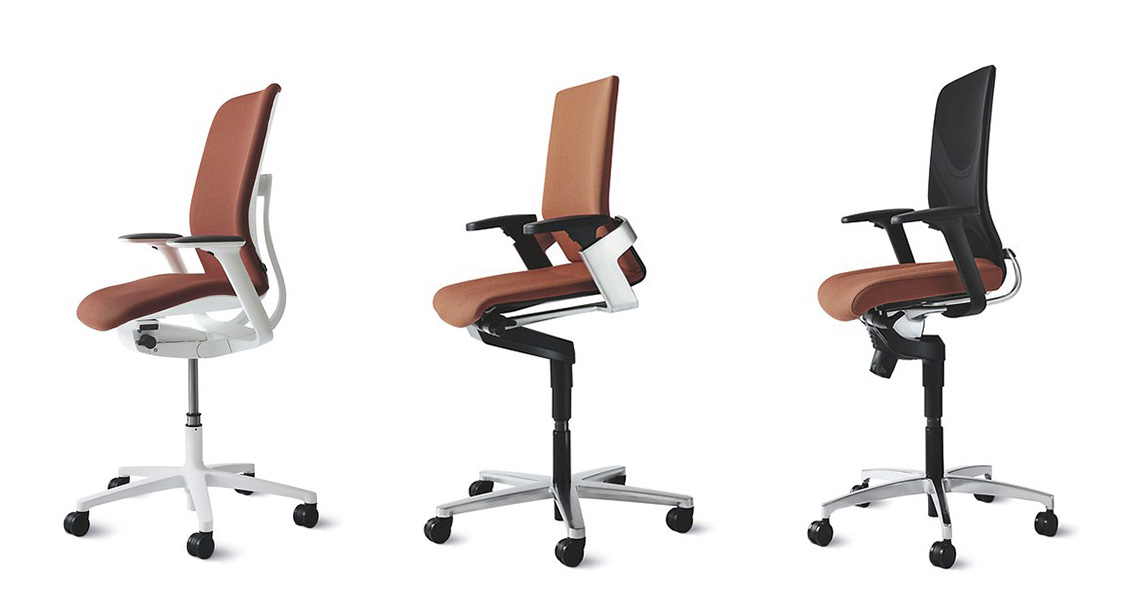
In addition to the three-dimensional, dynamic movement of the office chairs, electrically height-adjustable desks are becoming the new standard in health-driven office spaces where the goal is to actively inspire office workers to alternate between sitting and standing. The problem is that the majority of people don’t take up this option because getting up from a normal seating height and adjusting the table height are both too time consuming. Consequently, changing posture always means actively interrupting the job at hand. And this is exactly where Wilkhahn’s free-to-move models with their ESP elevated sitting position come in. On the one hand, they can be used as office chairs with the full range of 3D motion at a standard desk height. On the other hand, they can easily be raised to seating heights of 55 cm, 60 cm and higher.

The elevated sitting position also provides new additional benefits. The optional forward tilt on all three models transforms the upright position of the office chair into a place to perch but where the backrest can be leant on at the same time. If people lean back, the tiniest shifts in weight suffice to stimulate the three-dimensional mobility of their pelvises and they can dangle their legs as well. In turn, the forward movement doesn’t stop when people sit upright but almost automatically when they stand. Because the desk’s higher from the outset, it requires no or very little adjustment if users want to stand for a short while.
After the launch of Wilkhahn’s AT free-to-move chair with its elevated sitting position (ESP) in April this year, the ESP models are now also available for the athletic IN free-to-move chair and classic ON office chair. Sit-to-stand options are incorporated seamlessly and intuitively into workflows.
Click here for the new brochure for free-to-move chairs with elevated seating position (ESP).
